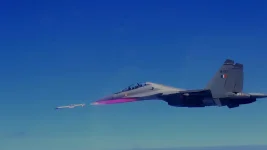- Views: 4K
- Replies: 66

Hindustan Aeronautics Limited (HAL) and Bharat Electronics Limited (BEL), two prominent Indian defence companies, are preparing for crucial trials of their jointly developed long-range dual-band infrared search and track (IRST) system for Su-30MKI fighter jets in late 2024. This indigenous IRST system represents a significant stride towards India's self-reliance in critical defence technology for the Indian Air Force (IAF).
The IAF intends to equip 84 of its upgraded Su-30MKI aircraft, designated as Super-30 MKI, with this advanced IRST system. These upgraded jets will undergo a local transformation process under the supervision of HAL. Currently, these aircraft rely on Russian-origin IRSTs, highlighting the importance of this indigenous development.
The project received approval from the Defence Acquisition Council (DAC) under the "Make II" category in May 2018. While the initial timeline aimed for induction between 2018 and 2021, the project faced delays.
The IAF has set demanding specifications for the IRST system, including:
- Long-range IR detection: The system must detect infrared signatures of enemy aircraft at substantial distances.
- Wide field of view (FoV): A large FoV allows pilots to scan a broader area for potential threats.
- High-resolution displays: The IRST should provide pilots with clear, high-resolution infrared (IR) and electro-optical (EO) images for precise target identification.
- Automatic tracking: The system should automatically track air and ground targets, reducing pilot workload.
- 3D localization: An eye-safe laser rangefinder integrated with the IRST will enable accurate 3D target location.

